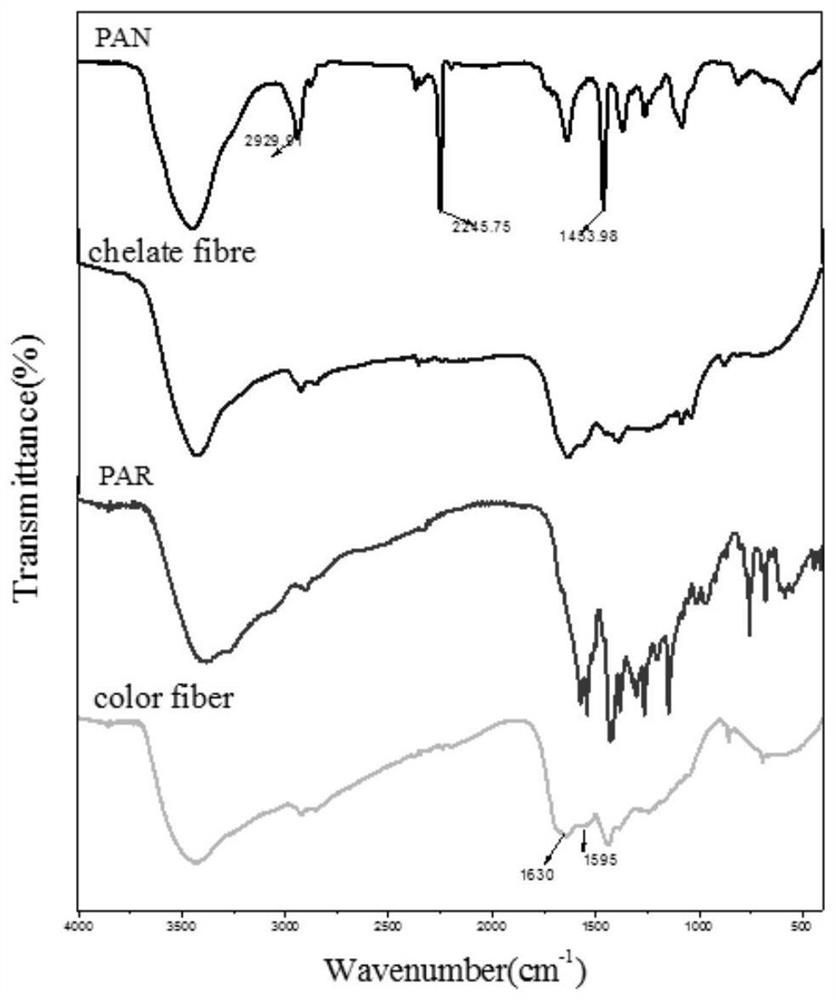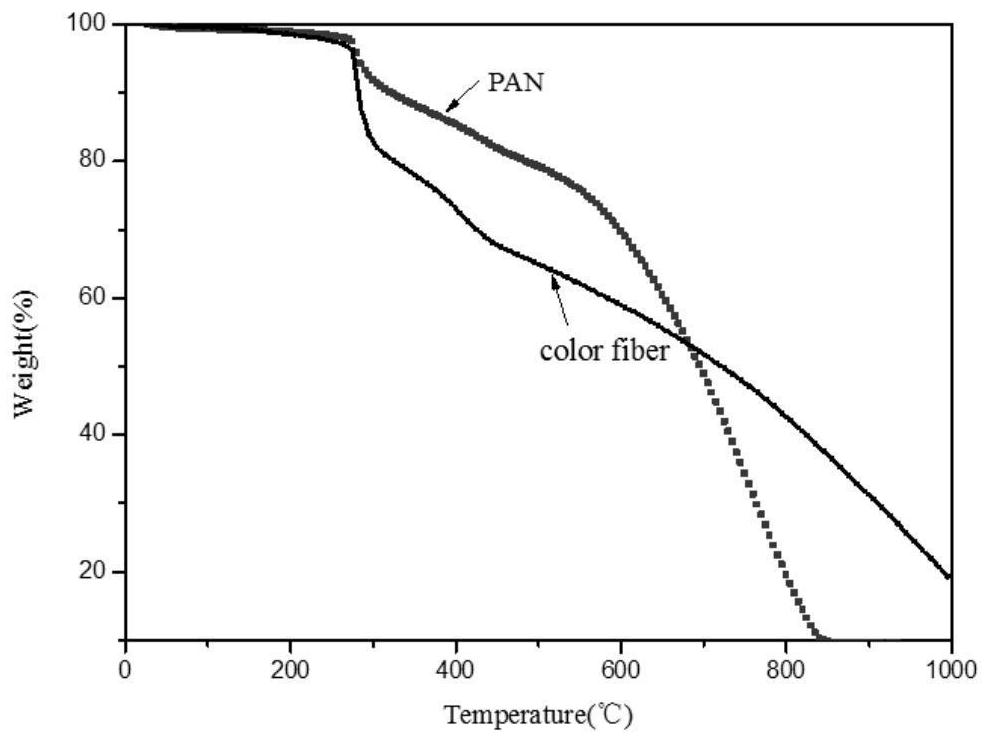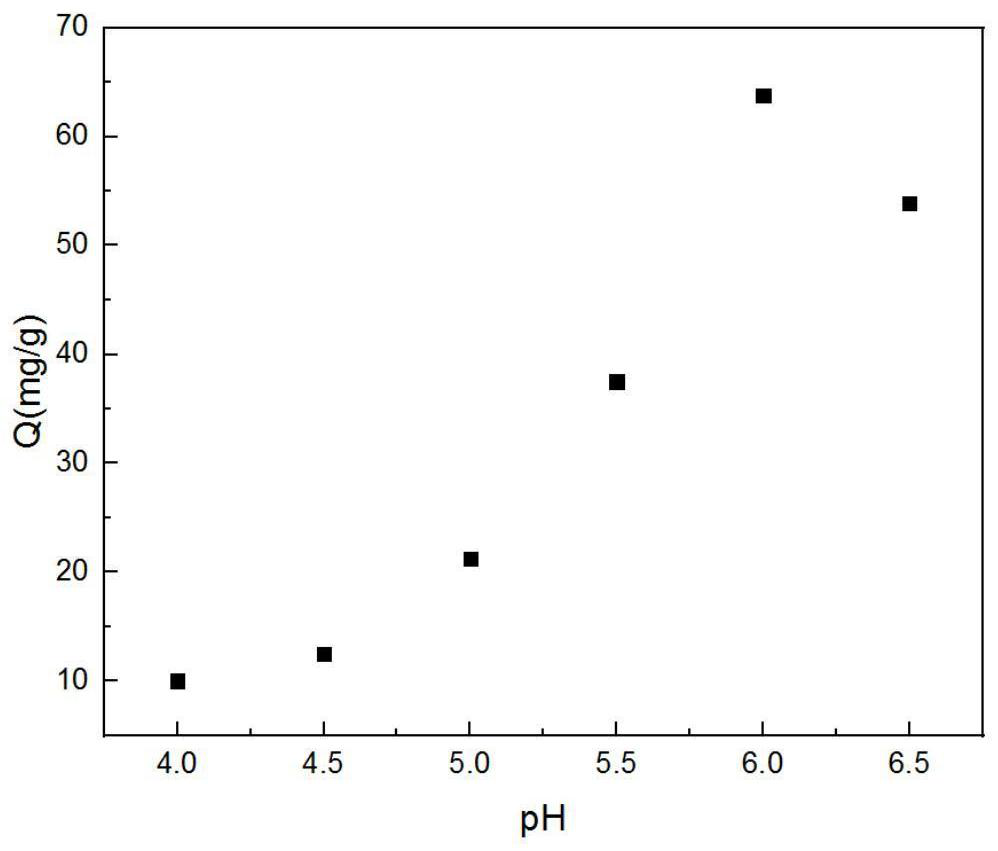Color developing fiber, preparation method thereof and Cu (II) detection application of color developing fiber
A color-developing fiber and color-developing agent technology, which is applied in the direction of fiber type, fiber treatment, and analysis by making materials undergo chemical reactions, can solve problems such as large errors, insufficient detection values, and easy to be affected by environmental parameters, etc., to achieve Rapid detection, good effect, and shortened reaction time
- Summary
- Abstract
- Description
- Claims
- Application Information
AI Technical Summary
Problems solved by technology
Method used
Image
Examples
Embodiment 1
[0037] Heavy metals generally refer to density greater than 4.5g / cm 3 There are 45 kinds of metals, such as copper, nickel, cadmium, etc., among which mercury, cadmium, lead, etc. have significant biological toxicity, and copper, zinc, nickel, etc. are toxic. Pollution is mainly due to its refractory and high solubility characteristics. After the completion of industrialization in various countries, heavy metal pollution has gradually become a very serious environmental problem. Whether in the atmosphere, soil, or water bodies, heavy metal pollution can be said to be everywhere. According to relevant statistics, many cities in my country are severely polluted by heavy metals in the air. Among them, Guangzhou and Nanjing have high concentrations of As, Cr, and Cd pollutants in air PM2.5 to varying degrees. Pollutants in the atmosphere will return to the ground in the form of ice, rain, and snow, causing pollution to soil and water. Part of the farmland has also been investig...
Embodiment 2
[0052] In order to explore the optimal synthesis conditions of chromogenic fibers, using DesignExpert software, the molar ratio of polyacrylonitrile fibers to ligands is 1:1 to 1:4, and the mass ratio of polyacrylonitrile fibers to catalysts is 100:1 to 10. : 1; the molar ratio of polyacrylonitrile fiber to developer is 3:1~1:2; the microwave reaction condition is the reaction time 0.5h~2h; the single factor experiment of the reaction temperature is 90℃~120℃ and other conditions. The results show that the order of the influencing factors from primary to secondary is: reaction temperature, reaction time, molar ratio of PAN to ligand, mass ratio of PAN to catalyst, molar ratio of PAN to PAR.
[0053] Therefore, continue to select the first three influencing factors: reaction temperature, reaction time, molar ratio of PAN and ligand, and carry out orthogonal experiment and response surface analysis.
[0054] Among them, the reaction temperature is 90°C, 105°C, and 120°C as a grad...
Embodiment 3
[0066] Experiment 1 Effect of pH on the Adsorption Amount of Cu(Ⅱ) Adsorbed by Chromogenic Fiber
[0067] Take the prepared dry and clean test tube, add 20ml of HAc-NaAc buffer solution with different pH and 5ml of copper ion solution with a concentration of 2000ppm respectively. The pH range of the selected HAc-NaAc buffer solution is 4-6.5. Each weighed 50 mg of chromogenic fiber was placed in a test tube, and was shaken and adsorbed in a constant temperature shaker at 25°C for 30 minutes. After the adsorption is completed, the fiber is separated from the solution by filtration, and the ion concentration of the obtained solution is detected by ICP-AES, and the adsorption amount of copper ions by the chromogenic fiber is calculated according to the following formula.
[0068]
[0069] C in formula (1) 0 and C e are the initial concentration (mg / mL) and adsorption equilibrium concentration (mg / L) of copper ions, respectively. V is the added amount (L) of the heavy metal...
PUM
 Login to View More
Login to View More Abstract
Description
Claims
Application Information
 Login to View More
Login to View More - R&D
- Intellectual Property
- Life Sciences
- Materials
- Tech Scout
- Unparalleled Data Quality
- Higher Quality Content
- 60% Fewer Hallucinations
Browse by: Latest US Patents, China's latest patents, Technical Efficacy Thesaurus, Application Domain, Technology Topic, Popular Technical Reports.
© 2025 PatSnap. All rights reserved.Legal|Privacy policy|Modern Slavery Act Transparency Statement|Sitemap|About US| Contact US: help@patsnap.com



